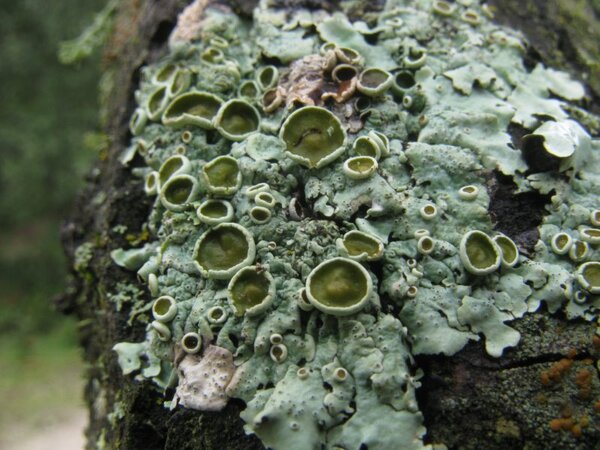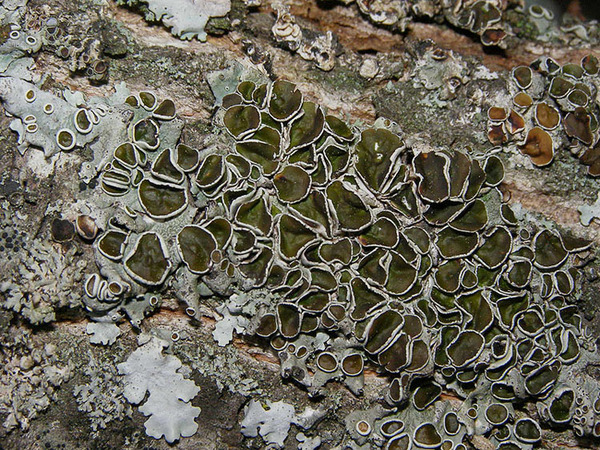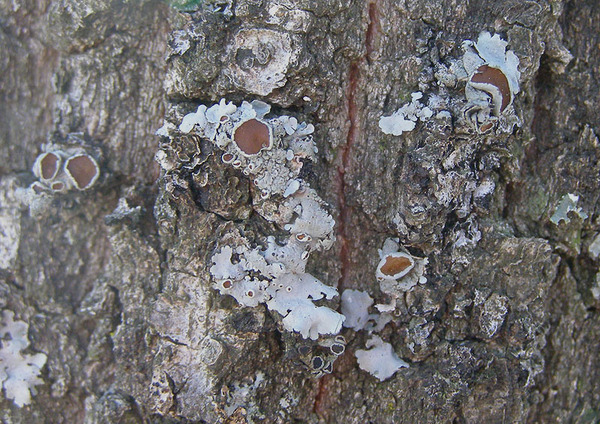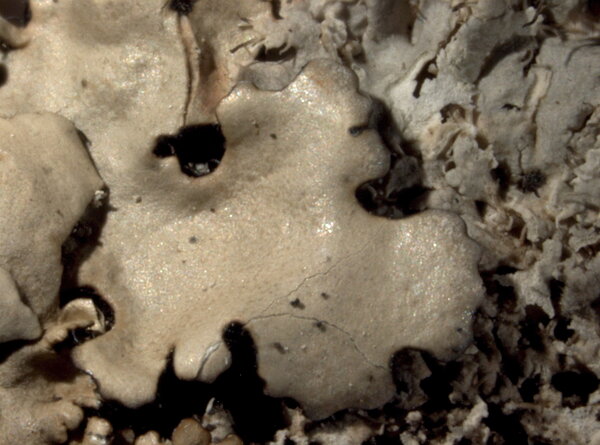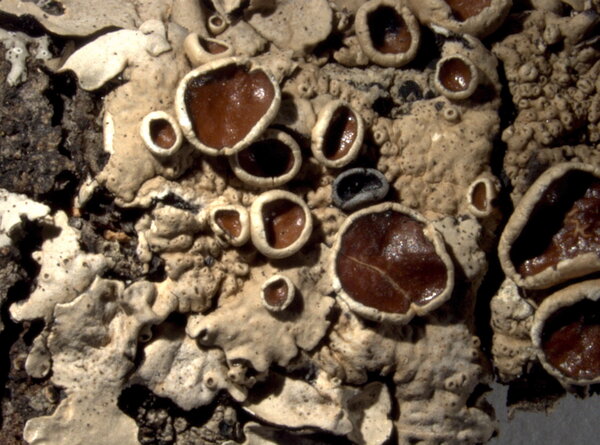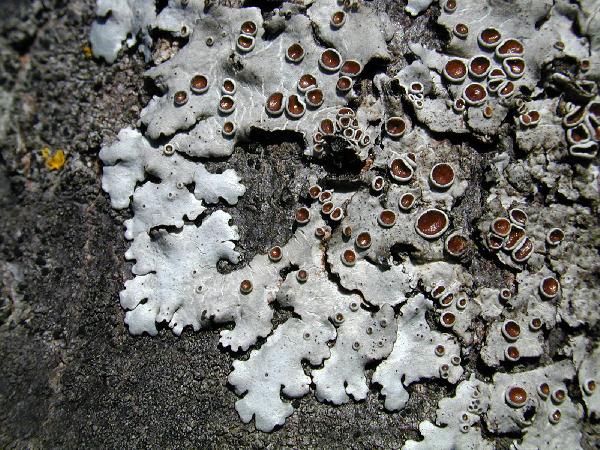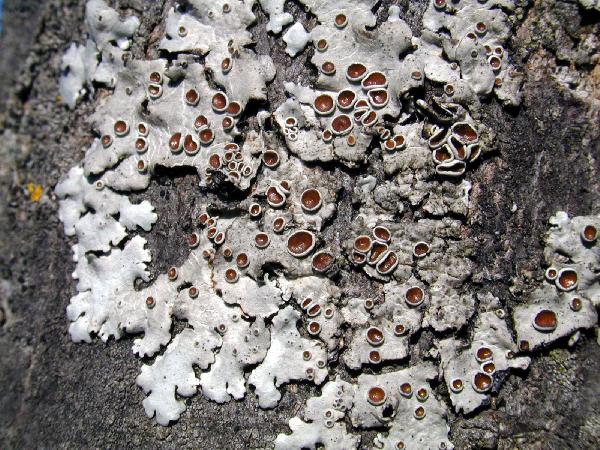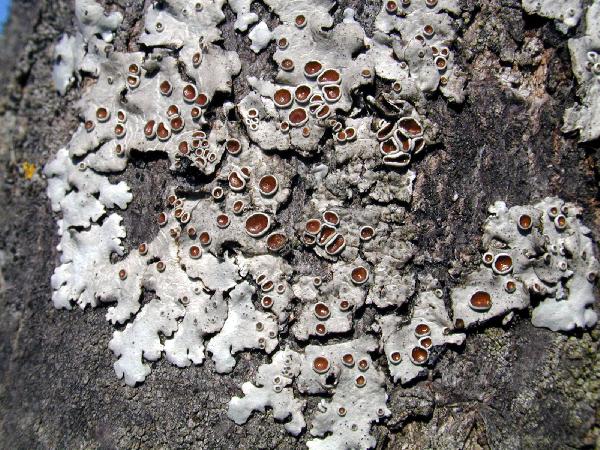Parmelina quercina (Willd.) Hale
Phytologia, 28: 483, 1974. Basionym: Lichen quercinus Willd. - Fl. Berol. Prodr.: 353, 1787.
Synonyms: Parmelia quercina (Willd.) Vain.
Distribution: N - VG (Castello 1996, Castello & Skert 2005), Frl, Ven (Caniglia & al. 1999, Nascimbene 2005c), TAA (Nascimbene 2003, Nascimbene & al. 2022), Lomb (Zocchi & al. 1997, Arosio & al. 2003, Valcuvia & al. 2003, Furlanetto 2010), Piem (Piervittori 1998, 2003, Griselli & al. 2003, Isocrono & al. 2004, Morisi 2005, Furlanetto 2010, Matteucci & al. 2013, Giordani & Malaspina 2016), VA (Piervittori & Isocrono 1999, Matteucci & al. 2008c, Ongaro & al. 2022), Emil (Gasparo & Tretiach 1996, Benesperi 2009, Fariselli & al. 2020), Lig (Brunialti & al. 1999, Putortì & al. 1999b, Brunialti & Giordani 2000, 2003, Giordani & al. 2002, 2025, Giordani 2006). C - Tosc (Tretiach & Nimis 1994, Loppi & al. 1994, 1995, 1996b, 1997, 1997b, 1998, 2002, 2002c, 2003, 2006, Loppi 1996, Loppi & De Dominicis 1996, Loppi & Nascimbene 1998, 2010, Putortì & al. 1998, 1999, Putortì & Loppi 1999b, Loppi & Putortì 2001, Paoli & Loppi 2008, Brunialti & Frati 2010, Paoli & al. 2012, Brackel 2015, Frati & Brunialti 2023), Marc (Nimis & Tretiach 1999, Frati & Brunialti 2006, Brackel 2015), Umb (Ravera 1998, Nimis & Tretiach 1999, Panfili 2000, 2000b, 2007, Ravera & al. 2006, Zucconi & al. 2013, Brackel 2015), Laz (Massari & Ravera 2002, Nimis & Tretiach 2004, Ruisi & al. 2005, Ravera & Genovesi 2008, Brackel 2015), Abr (Recchia & al. 1993, Recchia & Villa 1996, Olivieri & al. 1997, 1997b, Loppi & al. 1999, Nimis & Tretiach 1999, Brackel 2015, Caporale & al. 2016, Corona & al. 2016, Gheza & al. 2021), Mol (Garofalo & al. 1999, Nimis & Tretiach 1999, Caporale & al. 2008, Genovesi & Ravera 2014, Paoli & al. 2015, Brackel 2020, Caporale & Ravera 2020), Sar (Zedda 1995, 2002, 2002b, Rizzi & al. 2011, Neuwirth 2018, Di Nuzzo & al. 2022). S - Camp (Garofalo & al. 1999, 2010, Aprile & al. 2002, 2003, 2003b, 2011, Nimis & Tretiach 2004, Brunialti & al. 2013, Ravera & Brunialti 2013, Catalano & al. 2016), Pugl (Nimis & Tretiach 1999, Nascimbene & al. 2010b), Bas (Bartoli & Puntillo 1998, Nimis & Tretiach 1999, Potenza 2006, Brackel 2011, Cassola & al. 2025), Cal (Puntillo 1996, Puntillo & Puntillo 2004, Incerti & Nimis 2006, Brackel & Puntillo 2016, Brackel & Puntillo 2023), Si (Ottonello & al. 1994, Nimis & al. 1994, 1996b, Ottonello 1996, Schicchi & al. 1997, Czeczuga & al. 1999, Grillo & Caniglia 2004, 2006, Brackel 2008b, 2008c, Campisi & al. 2020, Brackel & Puntillo 2023).
Description: Thallus foliose, heteromerous, dorsiventral, tightly adnate, usually forming regular, up to 8(-10) cm wide rosettes. Lobes 2-5(-8) mm wide, usually short, dichotomously or irregularly branched, contiguous and imbricate in central parts, often pruinose at margins, the tips rounded, not or very slightly crenate and slightly down-turned, with 0.08-0.2 mm long, black cilia on the margins (usually sparse and difficult to see), especially along the characteristically rounded axils. Upper surface pale mineral grey to blue-grey, smooth, emaculate; medulla white; lower surface black, brownish at lobe-tips, with short (0.5-1 mm), rather thick, simple, black, matt rhizines. Upper cortex of tightly packed, anticlinally oriented hyphae, with a pored epicortex, the cell walls with isolichenan; medulla white; algal layer continuous; lower cortex paraplectenchymatous, with rounded and thick-walled cells. Apothecia frequent, lecanorine, 2-4(-6) mm across, with a red-brown disc and a thick, smooth thalline margin; lower side of margin grey to blackish, sometimes with few to numerous rhizines. Epithecium brownish; hymenium and hypothecium colourless. Asci 8-spored, clavate, the K/I+ blue tholus penetrated by a faintly amyloid apical cushion with parallel or diverging flanks, the wall K/I-, surrounded by a K/I+ blue outer layer, Lecanora-type. Ascospores 1-celled, hyaline, oval-oblong, (8-)9-11(-12) x 5-7 μm. Pycnidia numerous, immersed, appearing as black dots. Conidia bacilliform, straight, (8-)9-11.5 x c. 1 μm. Photobiont chlorococcoid. Spot tests: upper cortex K+ yellow, C-, KC-, P- or + faintly yellow; medulla K-, C+ red, KC+ red, P-, UV-. Chemistry: upper cortex with atranorin, medulla with lecanoric acid (major) and gyrophoric acid (minor). Note: a mild-temperate to Mediterranean lichen found on isolated, mostly broad-leaved trees; more photo- and thermo-, and less hygrophytic than P. pastillifera and P. tiliacea. See also note on P. carporrhizans.
Growth form: Foliose, broad lobed
Substrata: bark
Photobiont: green algae other than Trentepohlia
Reproductive strategy: mainly sexual
Commonnes-rarity: (info)
Alpine belt: absent
Subalpine belt: absent
Oromediterranean belt: absent
Montane belt: rare
Submediterranean belt: rather common
Padanian area: extremely rare
Humid submediterranean belt: rather common
Humid mediterranean belt: rather common
Dry mediterranean belt: very rare
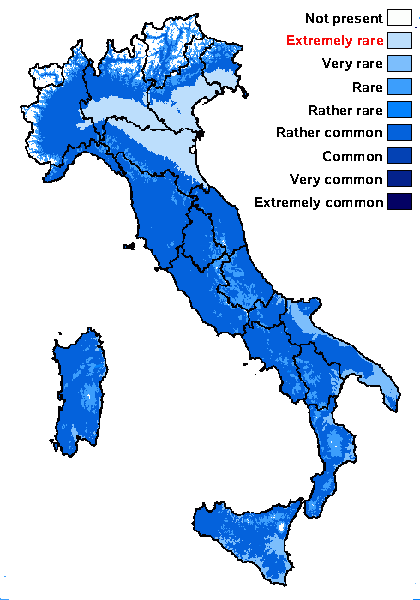
Predictive model
Herbarium samples
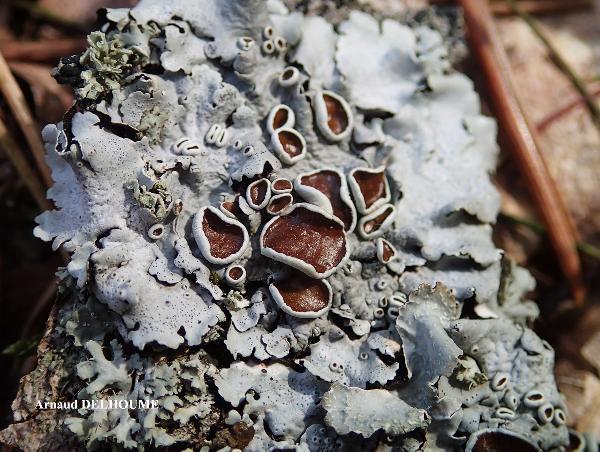
Arnaud Delhoume - Source: http://www.lichensmaritimes.org/index.php?task=fiche&lichen=536&lang=en
France, Indre
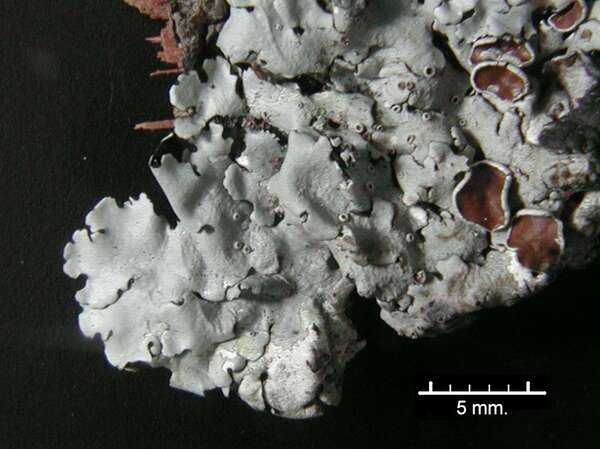

G. Incerti; Owner: Department of Life Sciences, University of Trieste
Herbarium: TSB (31733)
2001/11/26
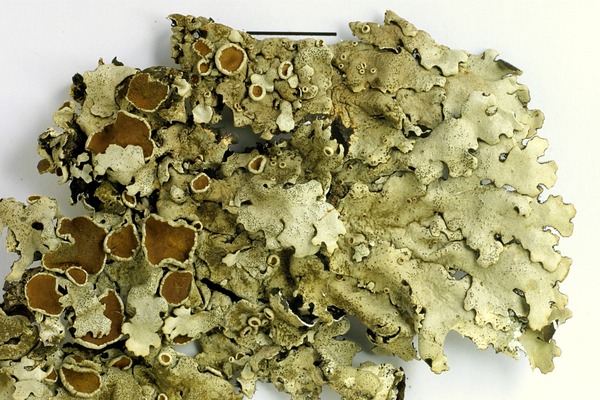

Felix Schumm - CC BY-SA 4.0
[5342], Spanien, Gran Canaria, Cruz de Tejeda, an Castanea; 28°00.308’ N, 15°35.884’ W, 1440 m. Leg. Schumm 31.12.1998, det. Schumm 1999.
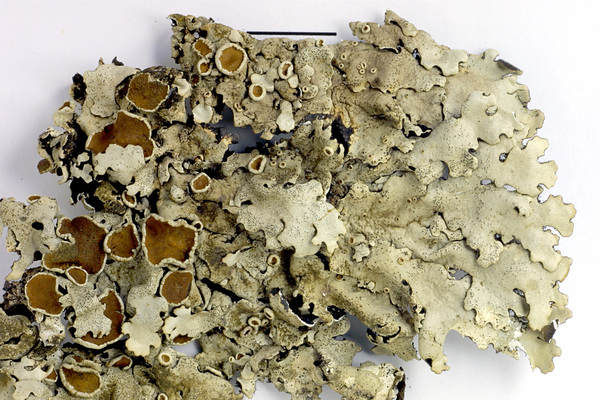

Felix Schumm - CC BY-SA 4.0
[5342], Spanien, Gran Canaria, Cruz de Tejeda, an Castanea; 28°00.308’ N, 15°35.884’ W, 1440 m. Leg. Schumm 31.12.1998, det. Schumm 1999.


Felix Schumm - CC BY-SA 4.0
[5342], Spanien, Gran Canaria, Cruz de Tejeda, an Castanea; 28°00.308’ N, 15°35.884’ W, 1440 m. Leg. Schumm 31.12.1998, det. Schumm 1999.
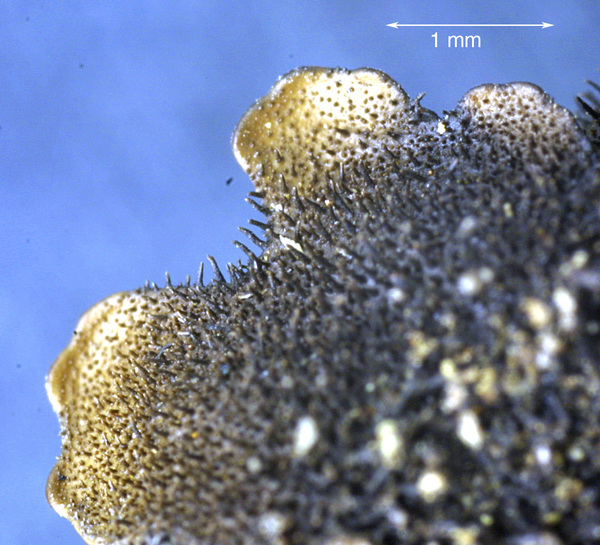

Felix Schumm - CC BY-SA 4.0
[5342], Spanien, Gran Canaria, Cruz de Tejeda, an Castanea; 28°00.308’ N, 15°35.884’ W, 1440 m. Leg. Schumm 31.12.1998, det. Schumm 1999.
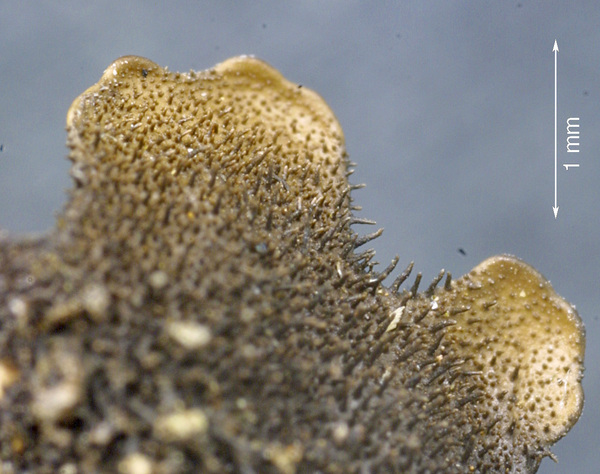

Felix Schumm - CC BY-SA 4.0
[5342], Spanien, Gran Canaria, Cruz de Tejeda, an Castanea; 28°00.308’ N, 15°35.884’ W, 1440 m. Leg. Schumm 31.12.1998, det. Schumm 1999.
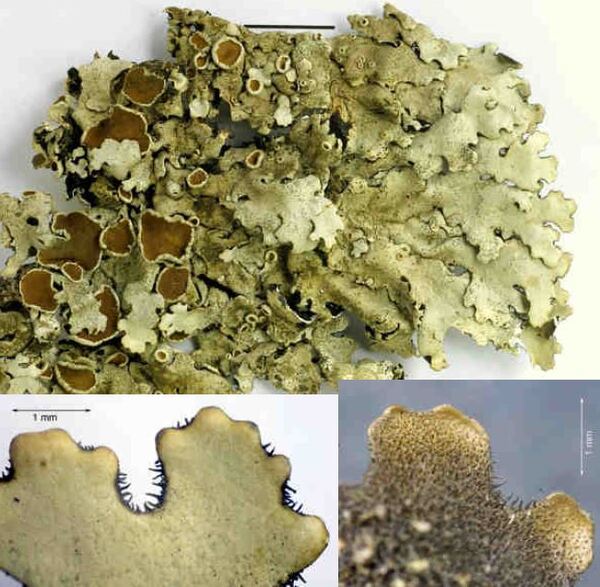

Felix Schumm – CC BY-SA 4.0
Image from: F. Schumm (2008) - Flechten Madeiras, der Kanaren und Azoren. Beck, OHG - ISBN: 978-3-00-023700-3


P.L. Nimis; Owner: Department of Life Sciences, University of Trieste
Herbarium: TSB (40987)
2001/12/03
young apothecia with black rhizines (form corresponding to P. carporrhizans)

Courtesy Danièle et Olivier Gonnet - Source: https://www.afl-lichenologie.fr/Photos_AFL/Photos_AFL_P/Text_P_2/Parmelina_quercina.htm
France, 2011 - Poleymieux-au-Mont-d'Or - Rhône

Courtesy Danièle et Olivier Gonnet - Source: https://www.afl-lichenologie.fr/Photos_AFL/Photos_AFL_P/Text_P_2/Parmelina_quercina.htm
France, 2011 - Poleymieux-au-Mont-d'Or - Rhône
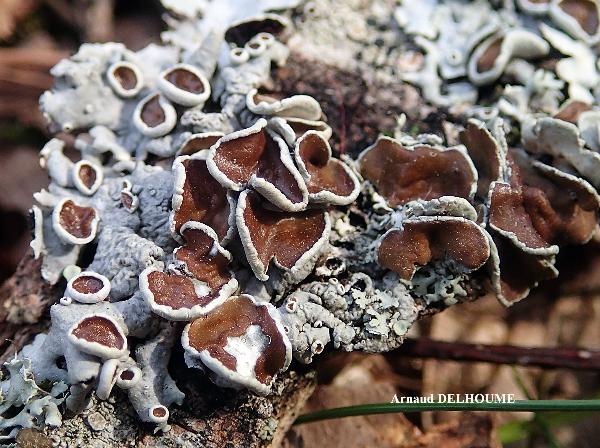
Arnaud Delhoume - Source: http://www.lichensmaritimes.org/index.php?task=fiche&lichen=536&lang=en
France, Indre
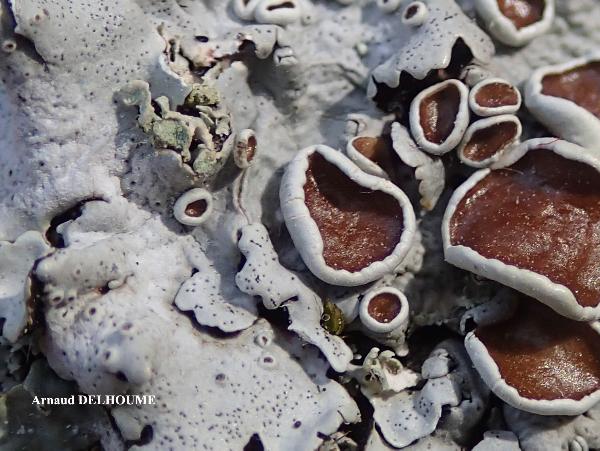
Arnaud Delhoume - Source: http://www.lichensmaritimes.org/index.php?task=fiche&lichen=536&lang=en
France, Indre
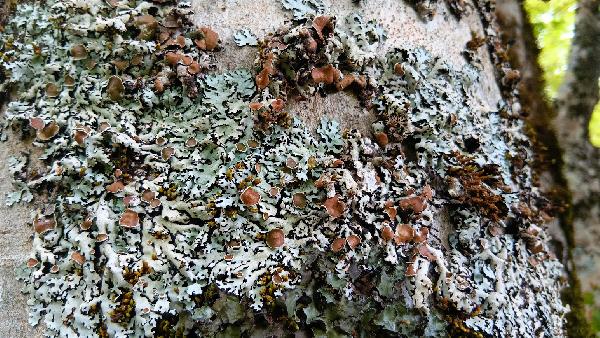
Giovanna Potenza - CC BY 4.0
Italia, Basilicata, Monte Zaccana 1250 m Comune di Castelluccio Superiore
On Fagus sylvatica
Growth form: Foliose, broad lobed
Substrata: bark
Photobiont: green algae other than Trentepohlia
Reproductive strategy: mainly sexual
Commonnes-rarity: (info)
Alpine belt: absent
Subalpine belt: absent
Oromediterranean belt: absent
Montane belt: rare
Submediterranean belt: rather common
Padanian area: extremely rare
Humid submediterranean belt: rather common
Humid mediterranean belt: rather common
Dry mediterranean belt: very rare

Predictive model
| Herbarium samples |

Arnaud Delhoume - Source: http://www.lichensmaritimes.org/index.php?task=fiche&lichen=536&lang=en
France, Indre


G. Incerti; Owner: Department of Life Sciences, University of Trieste
Herbarium: TSB (31733)
2001/11/26


Felix Schumm - CC BY-SA 4.0
[5342], Spanien, Gran Canaria, Cruz de Tejeda, an Castanea; 28°00.308’ N, 15°35.884’ W, 1440 m. Leg. Schumm 31.12.1998, det. Schumm 1999.


Felix Schumm - CC BY-SA 4.0
[5342], Spanien, Gran Canaria, Cruz de Tejeda, an Castanea; 28°00.308’ N, 15°35.884’ W, 1440 m. Leg. Schumm 31.12.1998, det. Schumm 1999.


Felix Schumm - CC BY-SA 4.0
[5342], Spanien, Gran Canaria, Cruz de Tejeda, an Castanea; 28°00.308’ N, 15°35.884’ W, 1440 m. Leg. Schumm 31.12.1998, det. Schumm 1999.


Felix Schumm - CC BY-SA 4.0
[5342], Spanien, Gran Canaria, Cruz de Tejeda, an Castanea; 28°00.308’ N, 15°35.884’ W, 1440 m. Leg. Schumm 31.12.1998, det. Schumm 1999.


Felix Schumm - CC BY-SA 4.0
[5342], Spanien, Gran Canaria, Cruz de Tejeda, an Castanea; 28°00.308’ N, 15°35.884’ W, 1440 m. Leg. Schumm 31.12.1998, det. Schumm 1999.


Felix Schumm – CC BY-SA 4.0
Image from: F. Schumm (2008) - Flechten Madeiras, der Kanaren und Azoren. Beck, OHG - ISBN: 978-3-00-023700-3


P.L. Nimis; Owner: Department of Life Sciences, University of Trieste
Herbarium: TSB (40987)
2001/12/03
young apothecia with black rhizines (form corresponding to P. carporrhizans)

Courtesy Danièle et Olivier Gonnet - Source: https://www.afl-lichenologie.fr/Photos_AFL/Photos_AFL_P/Text_P_2/Parmelina_quercina.htm
France, 2011 - Poleymieux-au-Mont-d'Or - Rhône

Courtesy Danièle et Olivier Gonnet - Source: https://www.afl-lichenologie.fr/Photos_AFL/Photos_AFL_P/Text_P_2/Parmelina_quercina.htm
France, 2011 - Poleymieux-au-Mont-d'Or - Rhône

Arnaud Delhoume - Source: http://www.lichensmaritimes.org/index.php?task=fiche&lichen=536&lang=en
France, Indre

Arnaud Delhoume - Source: http://www.lichensmaritimes.org/index.php?task=fiche&lichen=536&lang=en
France, Indre

 INDEX FUNGORUM
INDEX FUNGORUM
 GBIF
GBIF
 DOLICHENS
DOLICHENS
